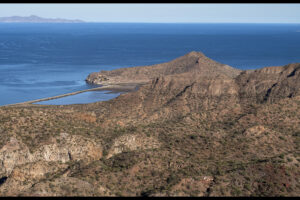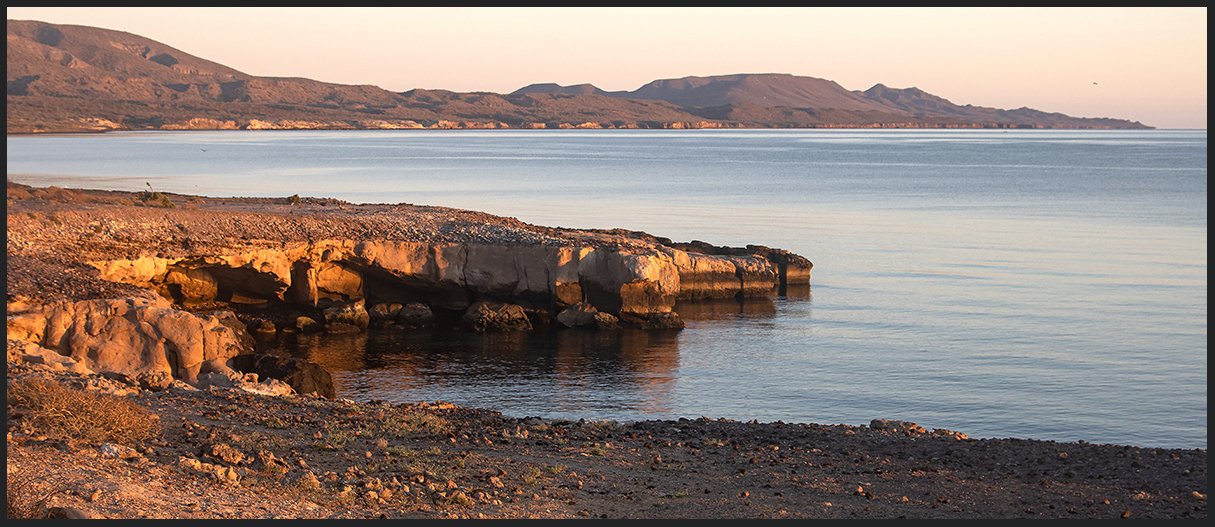
Gulf view of the peninsula forming the Bahía Concepción. One would never guess one of the most popular tourist destinations in Baja is just on the other side.
We camped on a rocky shoreline near San Nicolás, a tiny fishing village on the shore of the Sea of Cortez. From our rocky perch we could see the east side of the peninsula that forms Bahía Concepción, one of the most popular destinations in Baja. From our vantage point one would never guess how busy the bay on the other side is.

Local fisherfolk.
We saw a couple of locals going out to fish and one truck going out to the main highway, but that’s it. We saw no big fishing boats. We are guessing it’s mostly subsistence level living for the locals. They have gardens, goats, cattle and chickens to supplement the fish diets. The residents here are close enough to Mulege or Loreto; perhaps they take their catch there to sell? We don’t know.

Looking south you can just see the fishing boats of the tiny town of San Nicolás.
The shore is steep and rocky, not the sort to attract tourists. The road in is dirt. There are no tourist facilities…just the sort of place we like. However, it’s not a place to hang around for long, so after exploring the rocks we moved on.
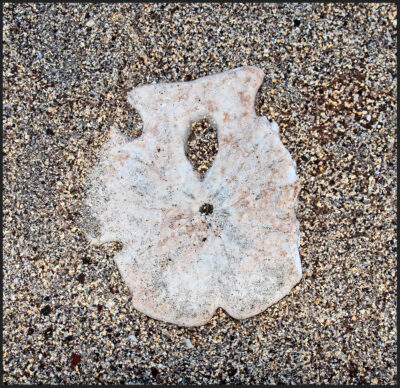
Petrified sand dollar in the rock.

Colorful crabs cling to the rocks.
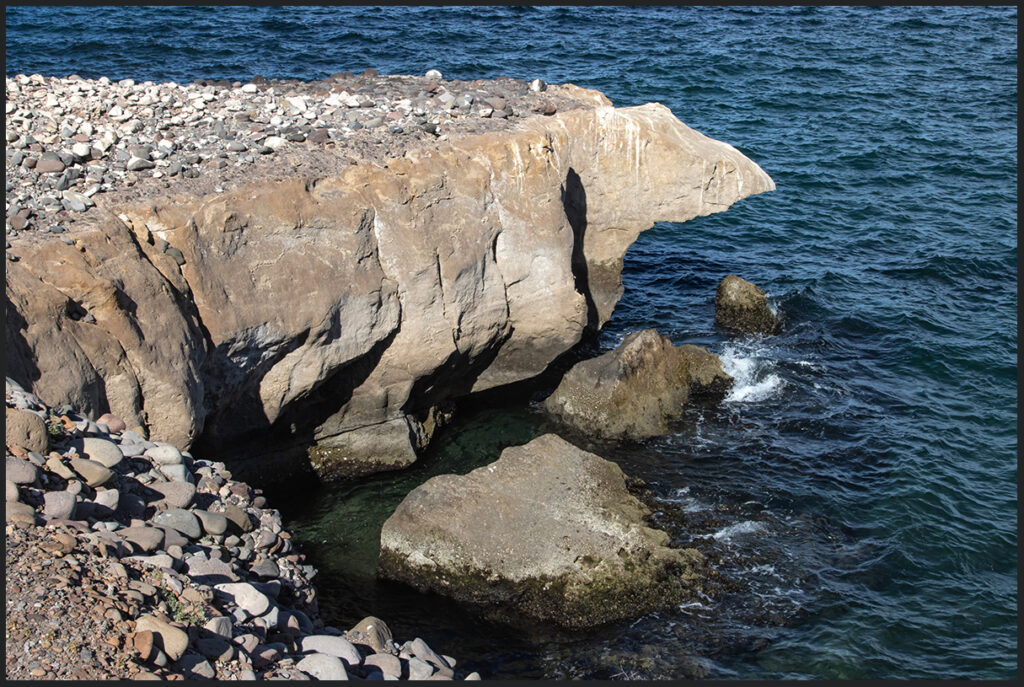
An inhospitable beach.
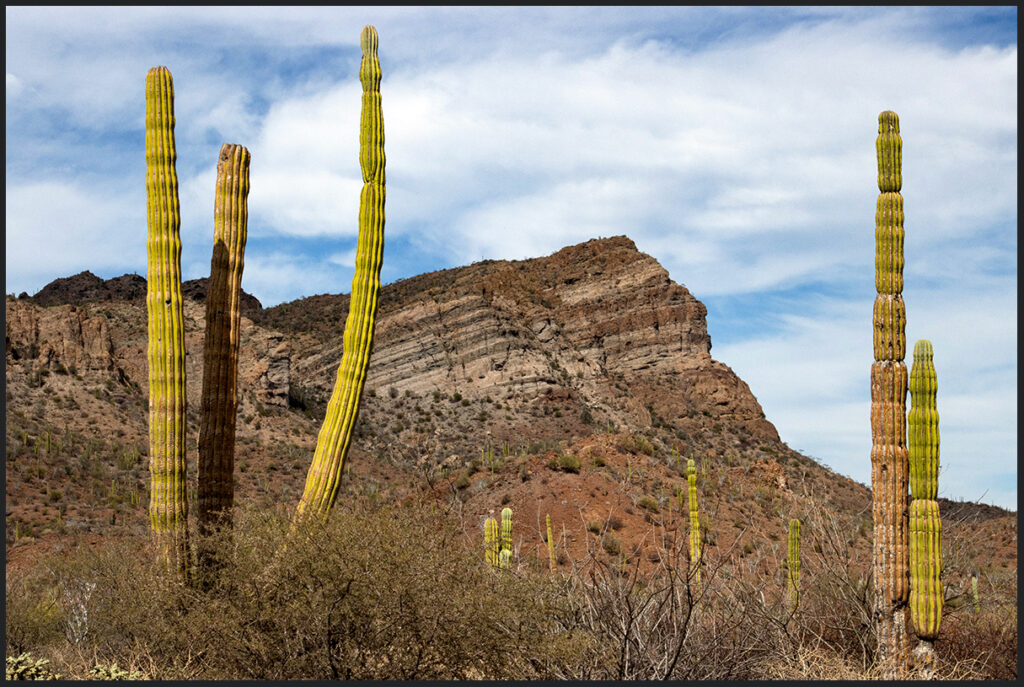
Roadside scene on the way to San Nicolás
On the bay side, south of Mulege, there are camping opportunities galore. Many northerners spend months at a time parked near the gorgeous sandy beaches on the west side of the bay. Local entrepreneurs service these RV camps, selling home-made breads, woven artistry, freshly caught fish and shrimp, etc. We stayed in the camps for several days last time. This time we just sailed on by to our favorite fish taco stand near the stadium in Mulege for lunch and then on to San Ignacio.
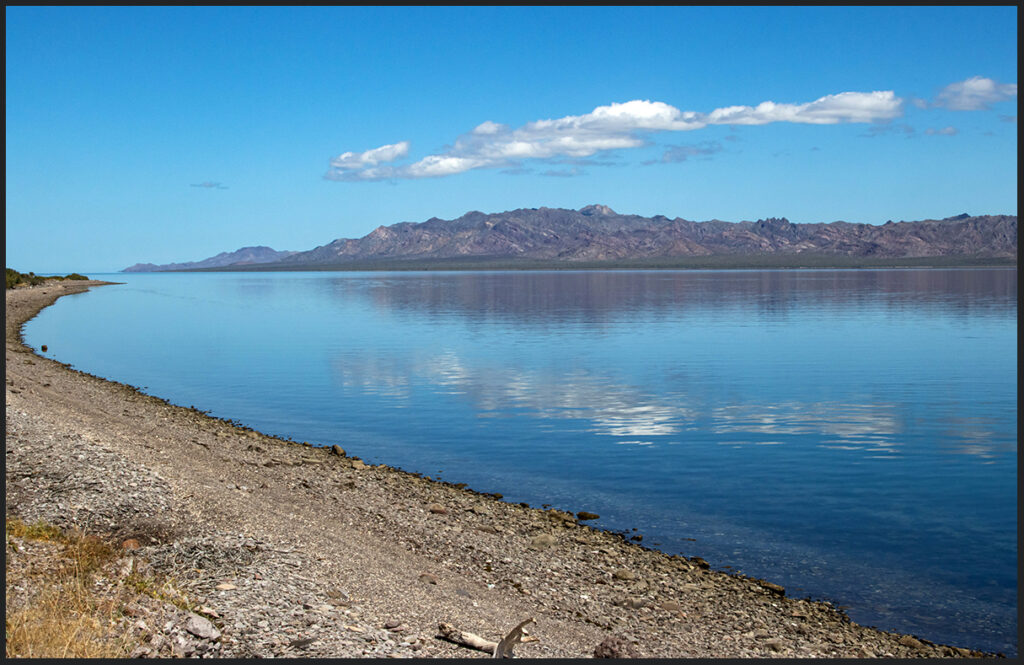
Bahía Concepción.

Flowers on the bank with colorful visitor.
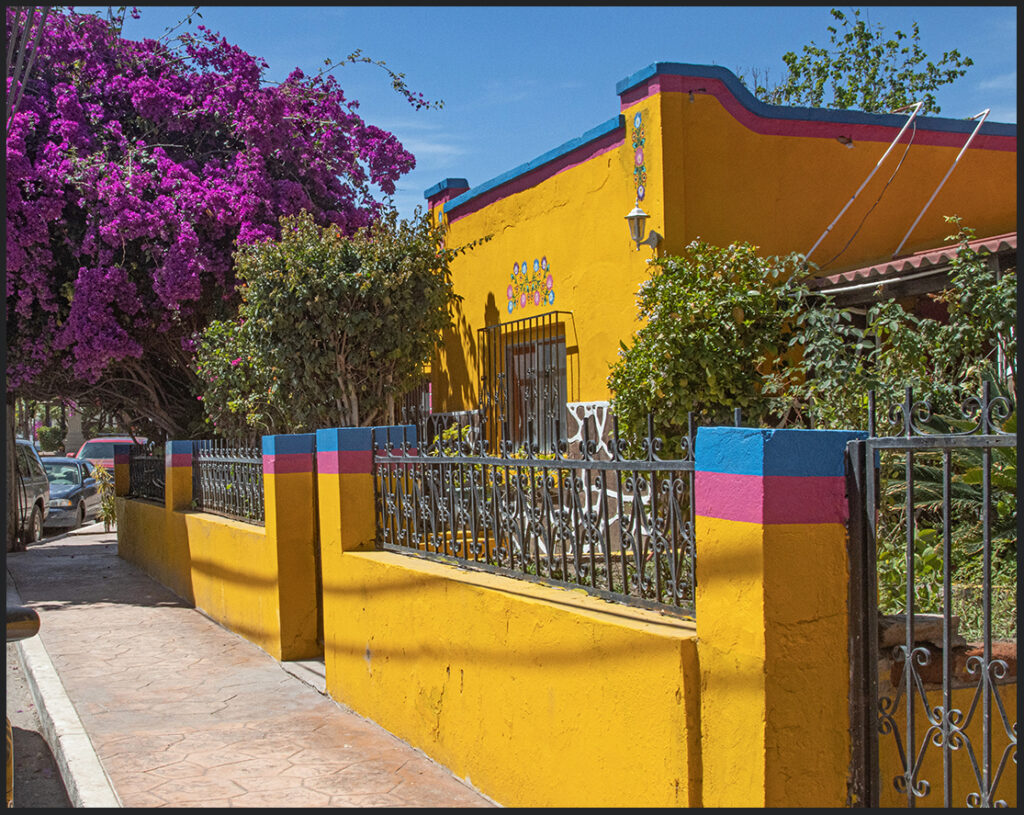
Colors of Mulege.
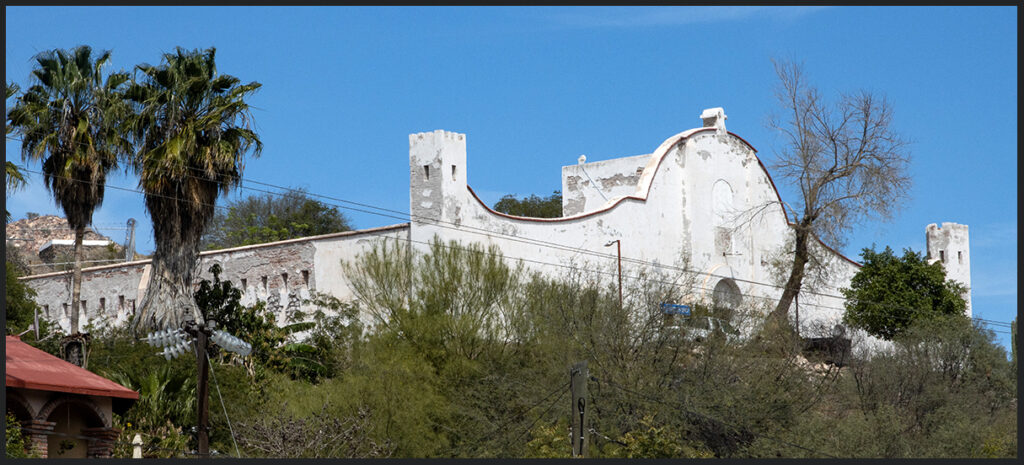
Old mission overlooking Mulege.
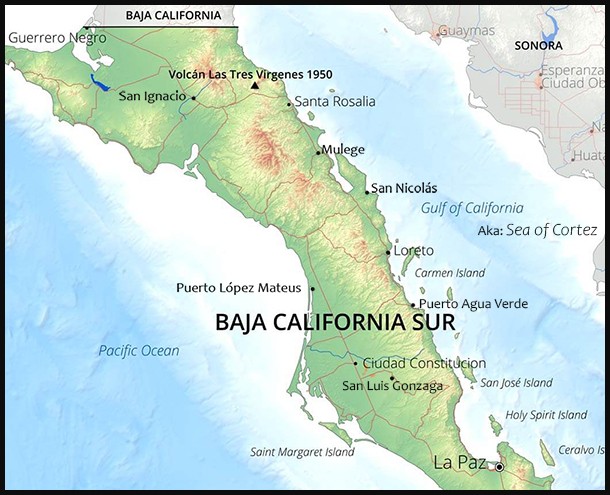
Map with added places of our interest.
We stay at San Ignacio coming and going in Baja. It’s a lovely little town that still has the feel of Old Spain. The main part of town, laid out around a traditional town square, retains much the same feel as when it was founded by the Jesuits in 1728. The Jesuits were thrown out of Mexico in 1768 and the Dominicans who moved in, built their mission church on the same spot in 1786, using local volcanic rock blocks. The town is a true oasis; quite a contrast to the desert scrub and volcanic rock of the surrounding desert.

Church on a Sunday morning with the padre hurrying to the 11 o’clock service.
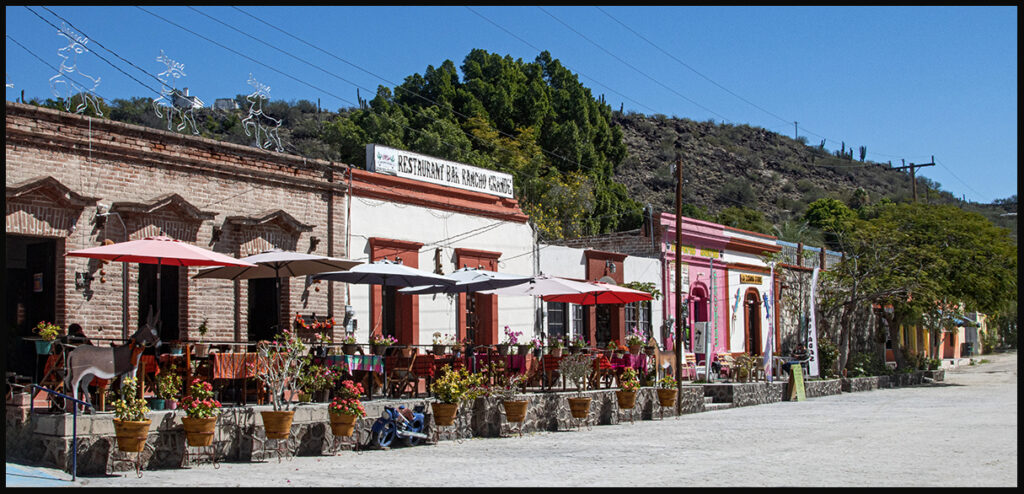
One side of the central square.
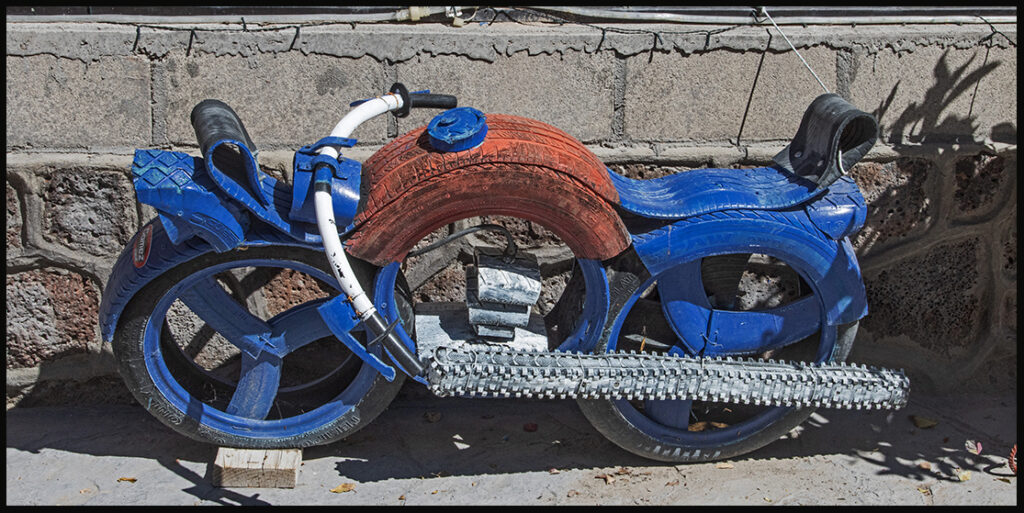
Tire art.
The beautiful lagoon on the road into town is part of the Río San Ignacio, one of only two real rivers in the entire state of Baja California Sur. In town the lagoon looks more like a lake than a river.
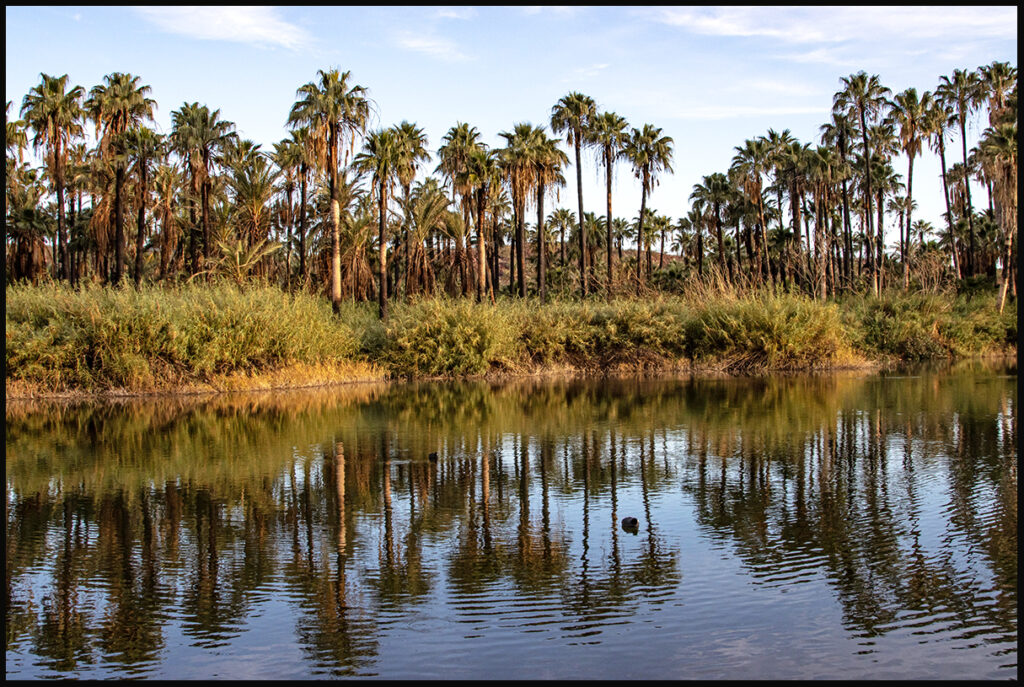
San Ignacio lagoon.
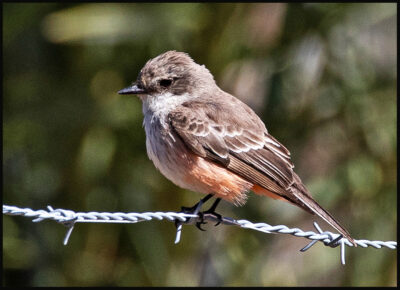
Mrs. Flycatcher isn’t as colorful.
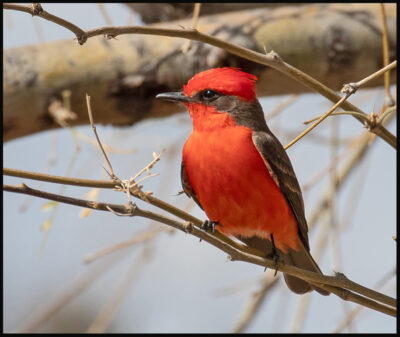
Water means birds, like this male Vermillion Flycatcher.
Laguna San Ignacio, on the shores of the Pacific Ocean, lies 40 miles to the west of San Ignacio. This is one of only three lagoons visited by the California gray whales.This one is still completely undeveloped. We tried to go whale watching there last trip but the winds drove us and all the other hopeful tourists away. We didn’t go this time because we’d already petted a baby whale in Magdalena Bay.
Leaving San Ignacio, one is soon in the desert again.
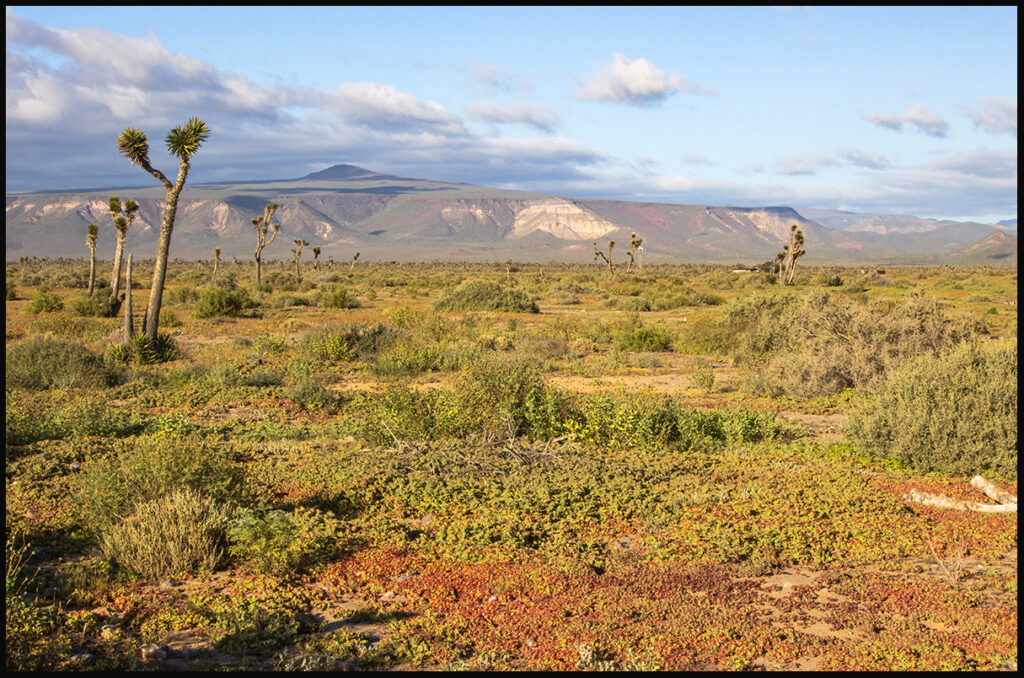
Near the highway.

Succulent plants cover the sandy soil for miles.
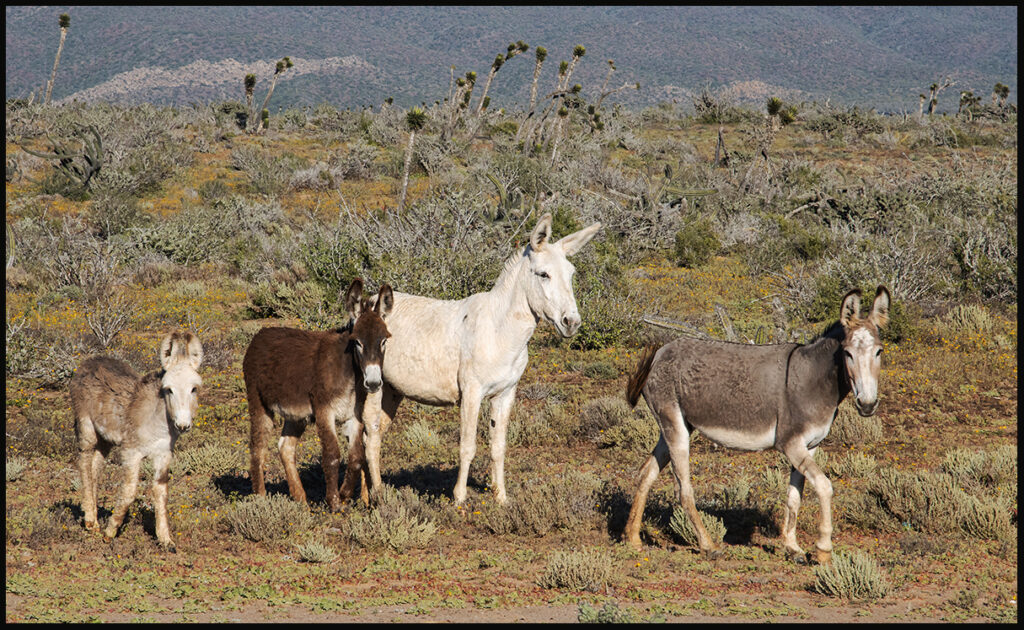
Desert denizens. Wild burros are common.
One of our loop road plans became untenable because the dirt road was so rough. We returned to a lunch spot we’d found on the way south, and decided to stay a couple of days. What follows are pictures of the desert surrounding our campsite area. The variety of plants and animals that manage to survive the harsh desert temperatures and dryness constantly amaze.

The chosen campsite.
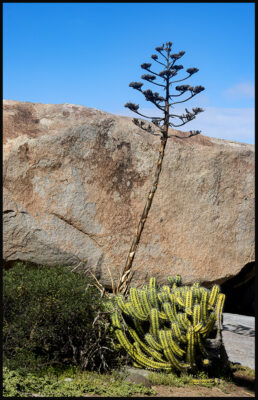
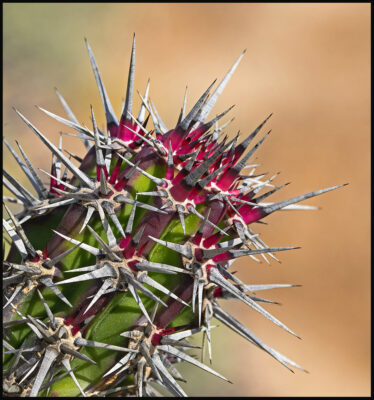

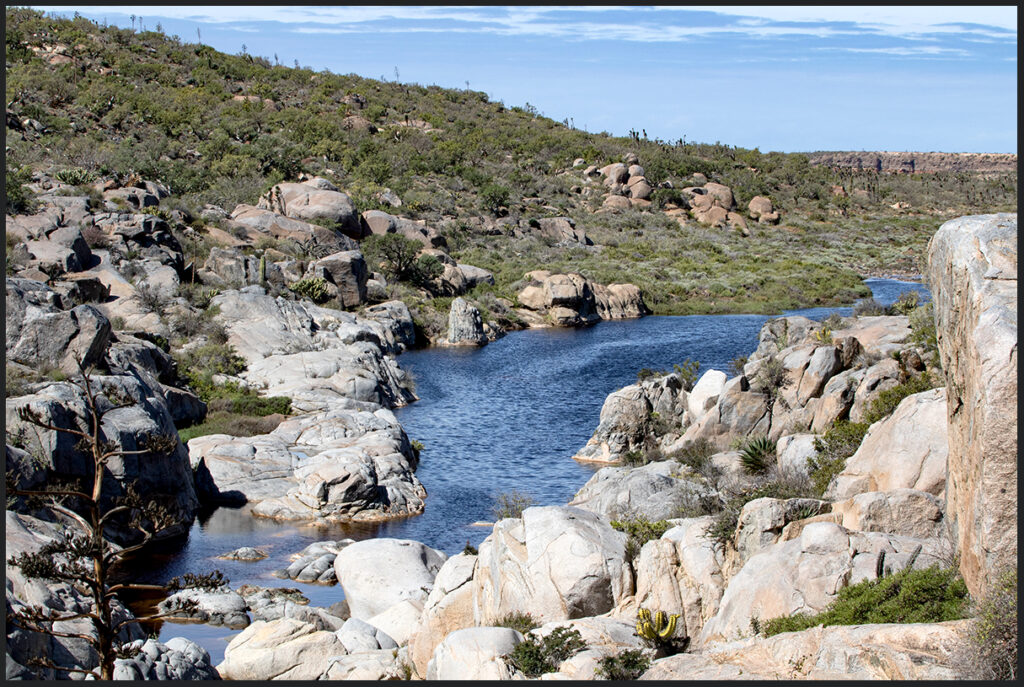
An intermittent river runs through this valley. There had been enough recent rain that the river was flowing, possibly making it all the way to the Pacific Ocean, not all that far away.
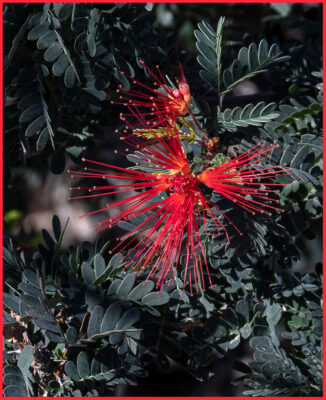
Flowering plants take advantage of sporadic rains.

Agaves are common.
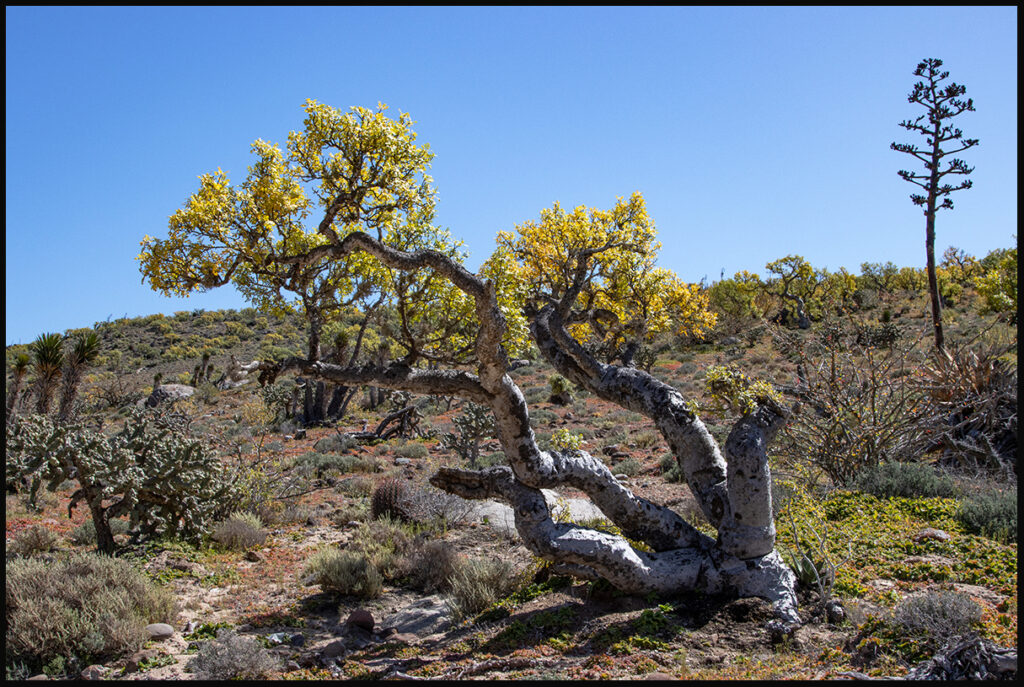
Elephant tree, one of two species of elephant trees endemic to North American deserts.
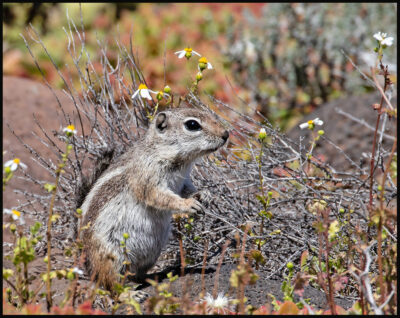
Ground squirrels are happy here.
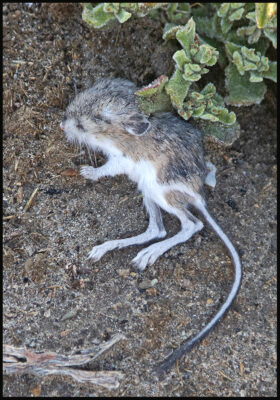
Agile kangaroo rat. Dead.
These are nocturnal rodents that get all their water from the vegetation they eat. There were scads of tracks made by these little guys in the morning dust.
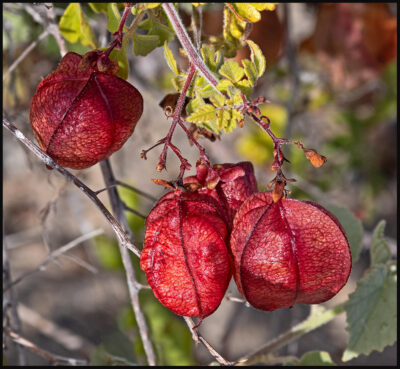
Pretty seed pods of a plant I don’t know.
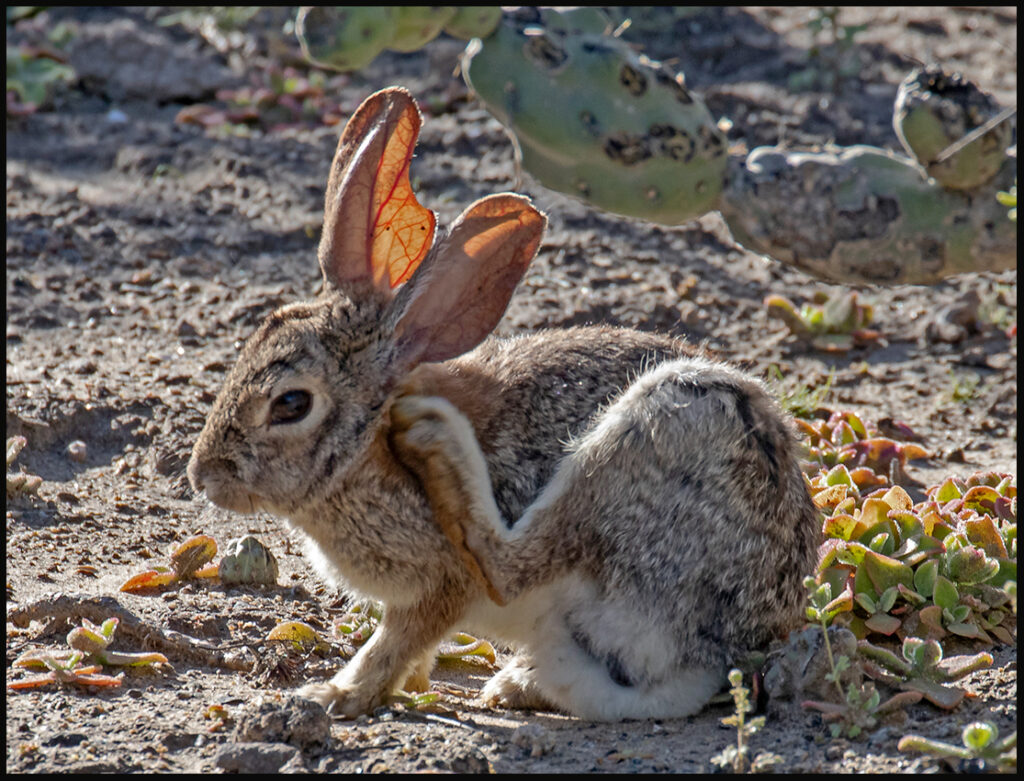
Cottontail rabbit.

Special area we liked. Reminded us of a movie set.
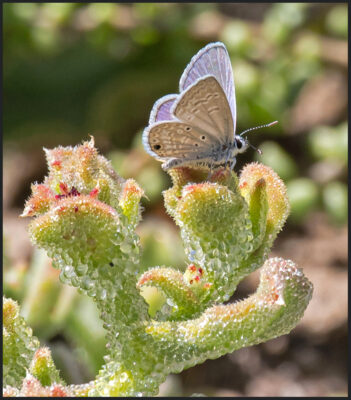
Ceraunus Blue on one of the weird succulent ground cover plants.

Possibly a Large Orange Sulphur
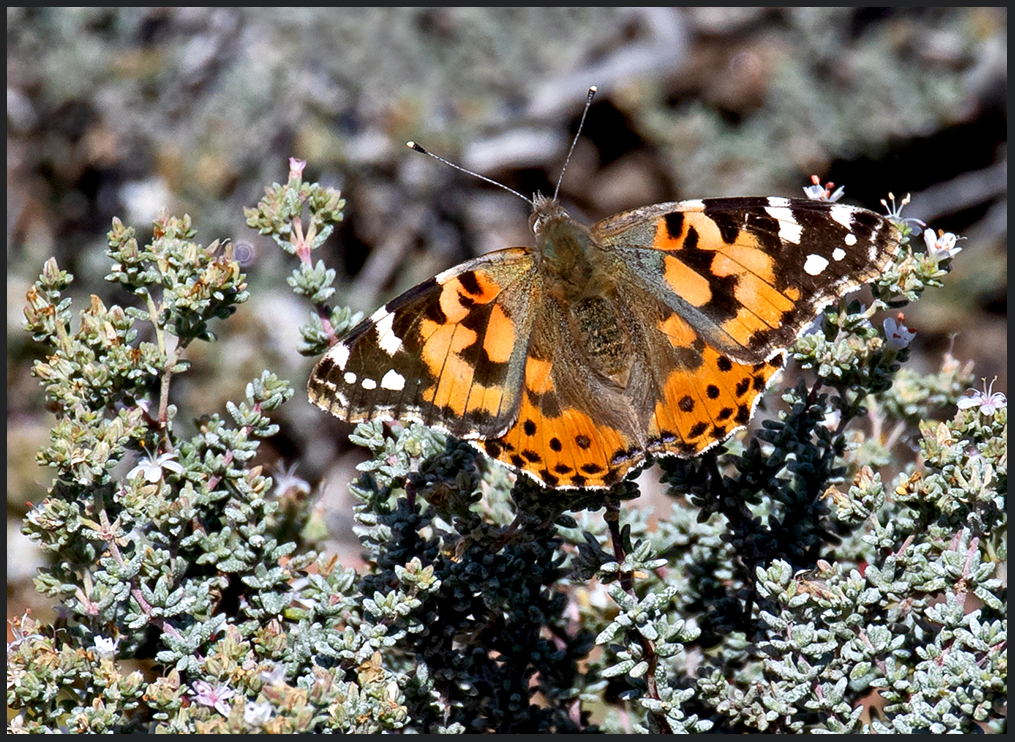
Painted Lady. We drove down through thousands of migrating painted ladies. Sadly many splatted on the windscreen. On the way back a couple of weeks later they were still flying north in prodigious numbers.
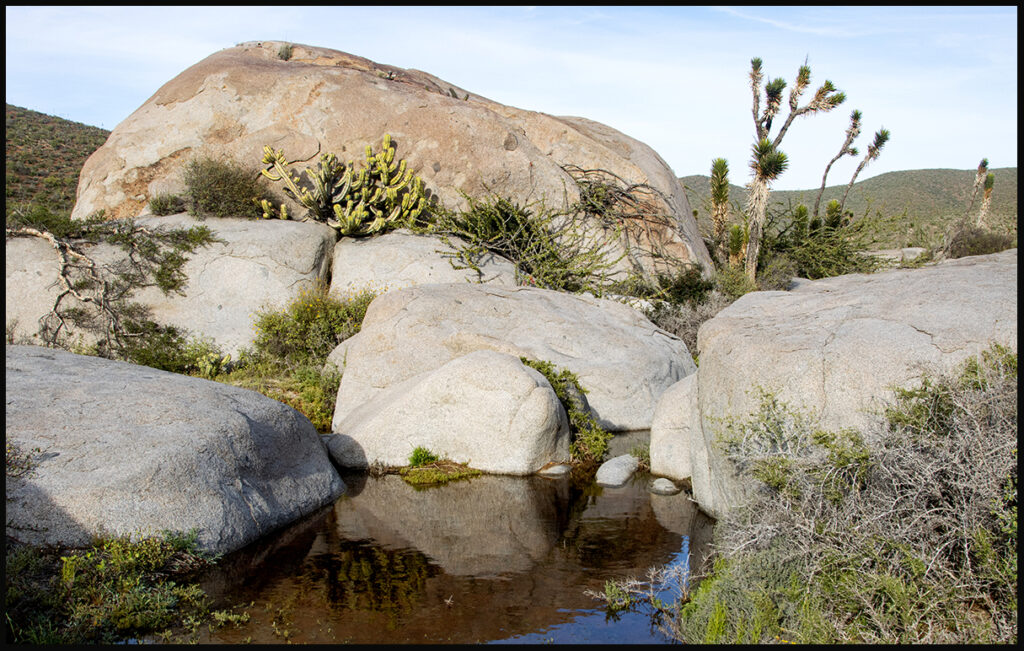
Smooth river rocks.
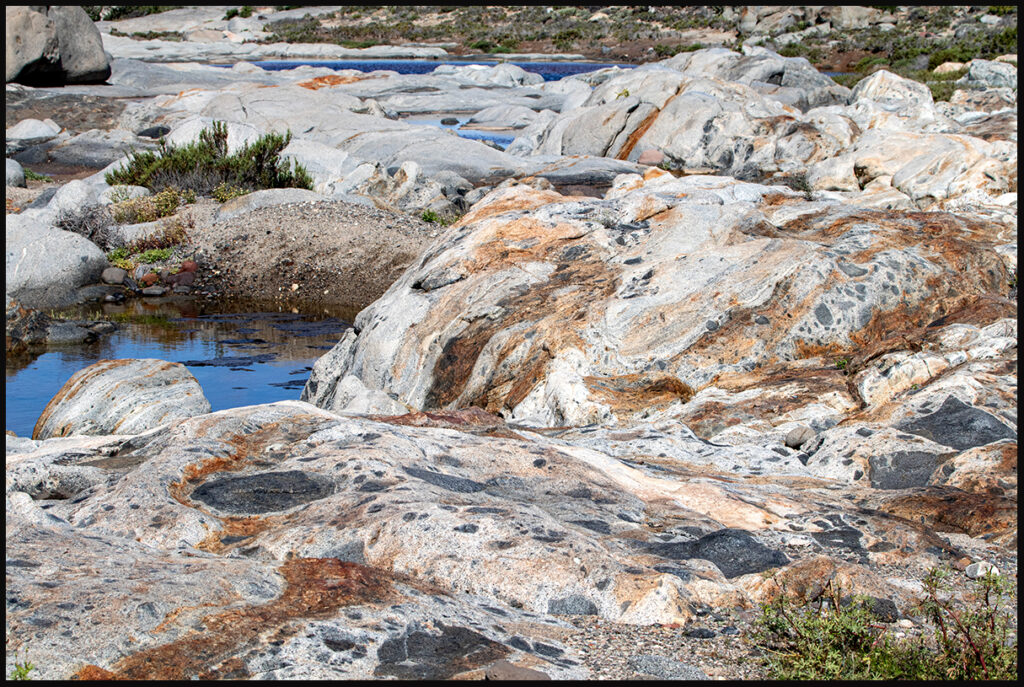
A geologist’s playground.
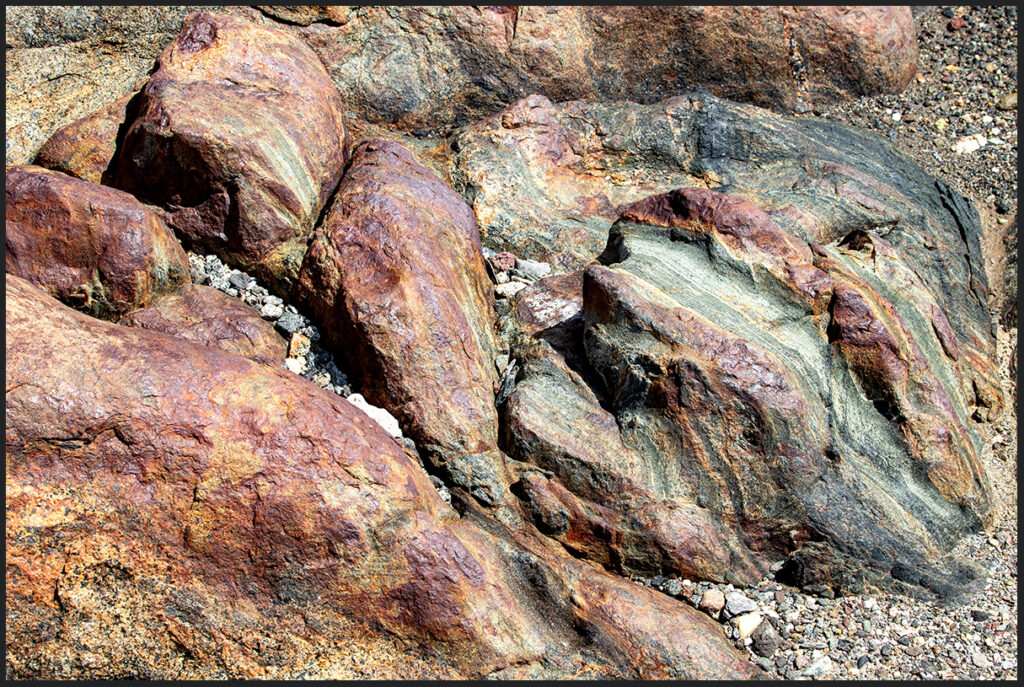
Scoured river rocks.

More etched rocks.
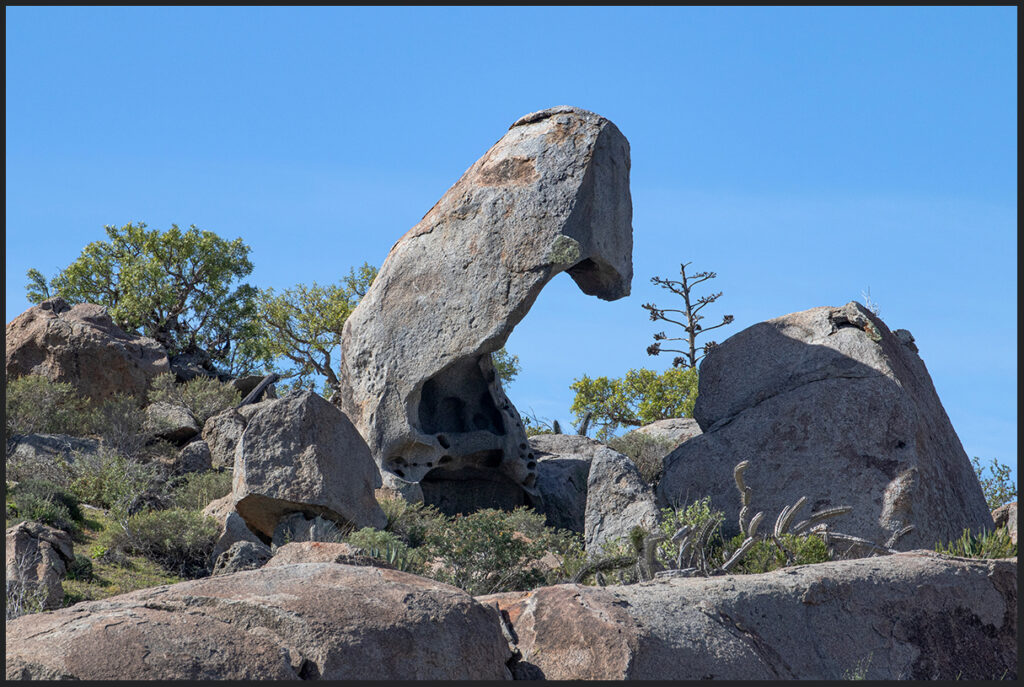
And yet more rocks. These on the hilltop.

Ladderback woodpecker.
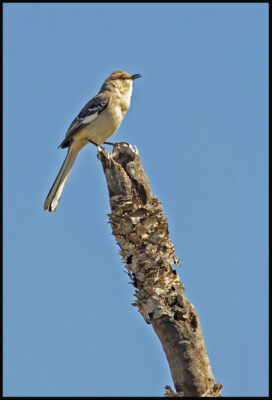
Northern Mocking birds were the most common, followed by Sage Thrashers.
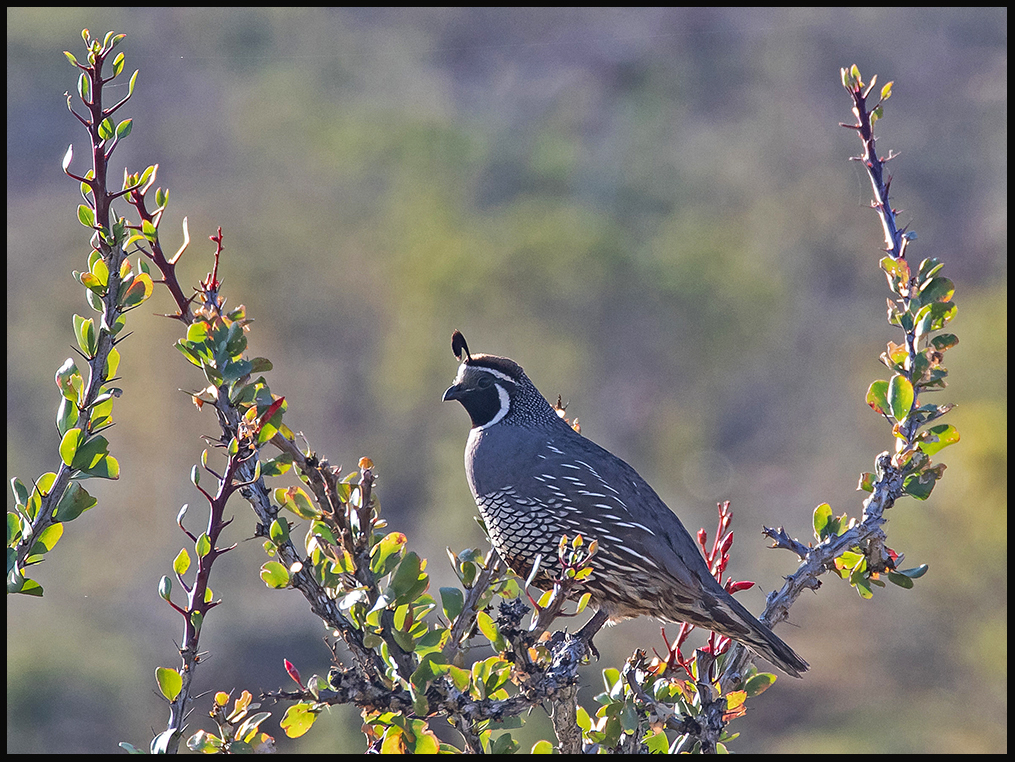
This male California Quail serenaded us in the mornings.
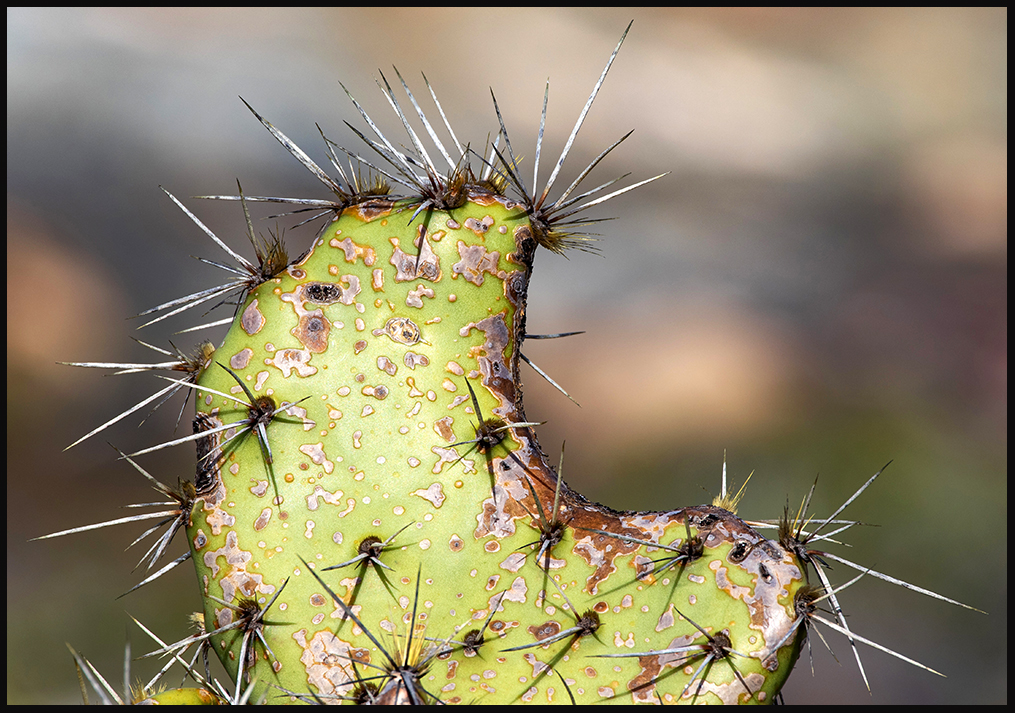
Prickly pears start reappearing. They’d become scarce further south.
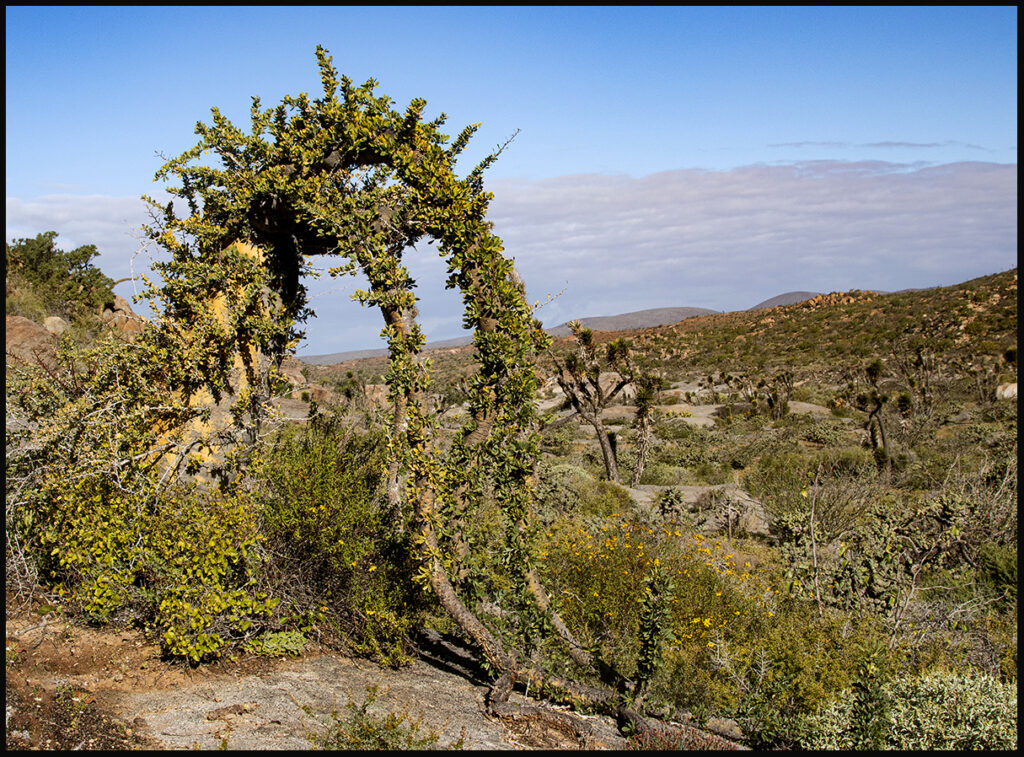
Boojum arch. This was the southern edge of the boojum range.
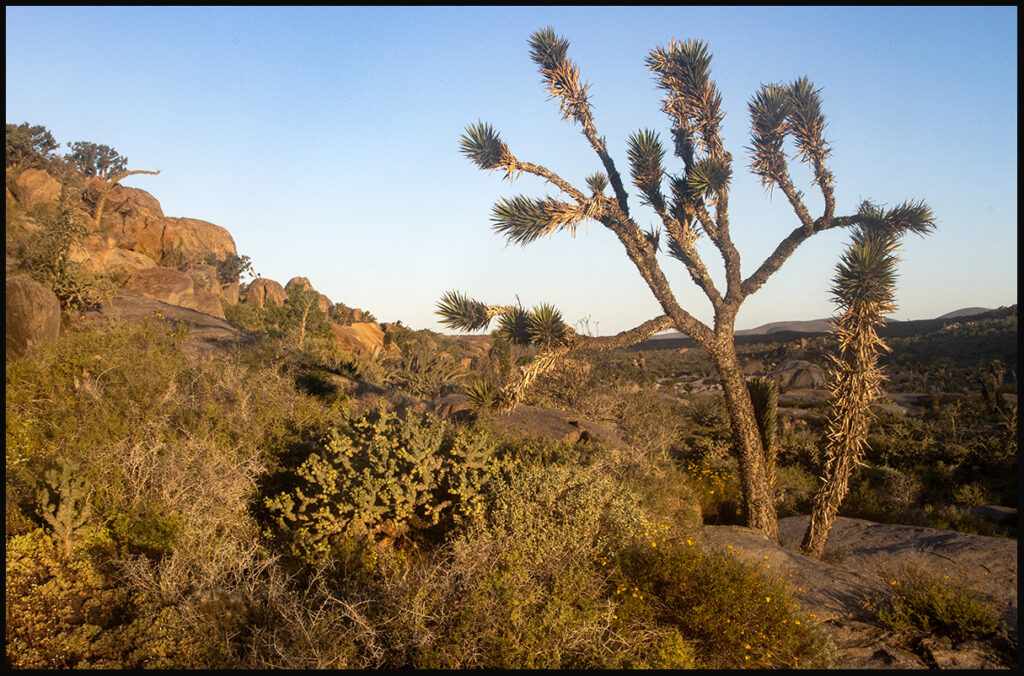
Morning light on endemic baja california tree yucca.
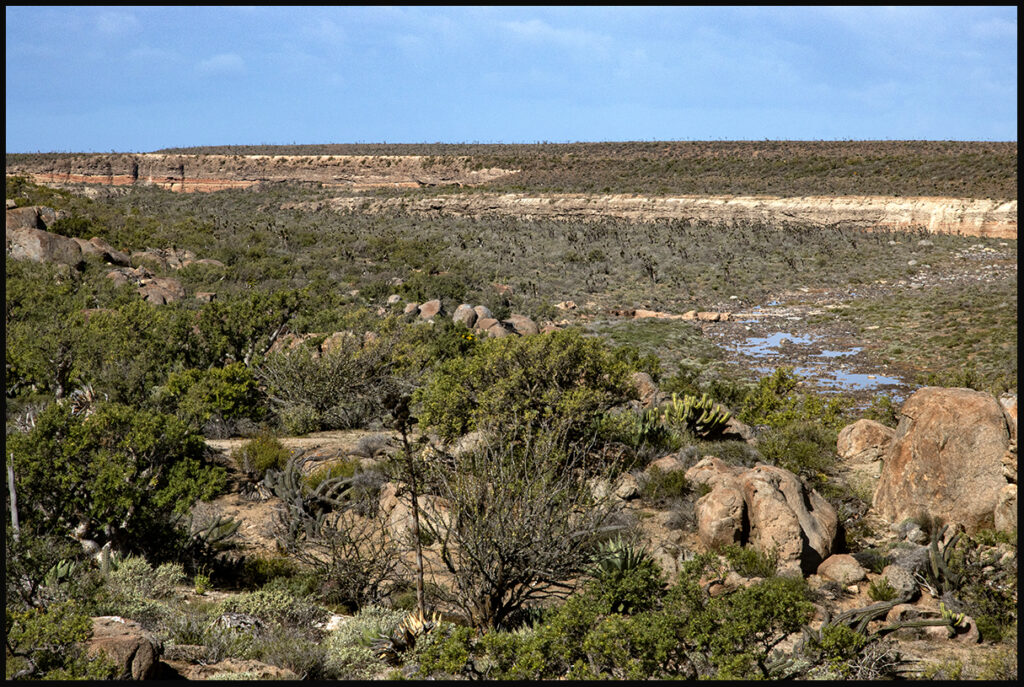
And now good-bye to our wonderful valley.
We tucked in to Bahía Los Angeles (L.A. Bay) just to see what was happening. It’s a beautiful bay with scattered islets. We headed south of town to find some off the grid camping, and as luck would have it, found a sort of park area/boat ramp area with a concrete pad to park on near and old mill of some sort . No one was there. Only people we saw were some divers who tried to sell us their catch of octopuses. Not a favorite of ours.
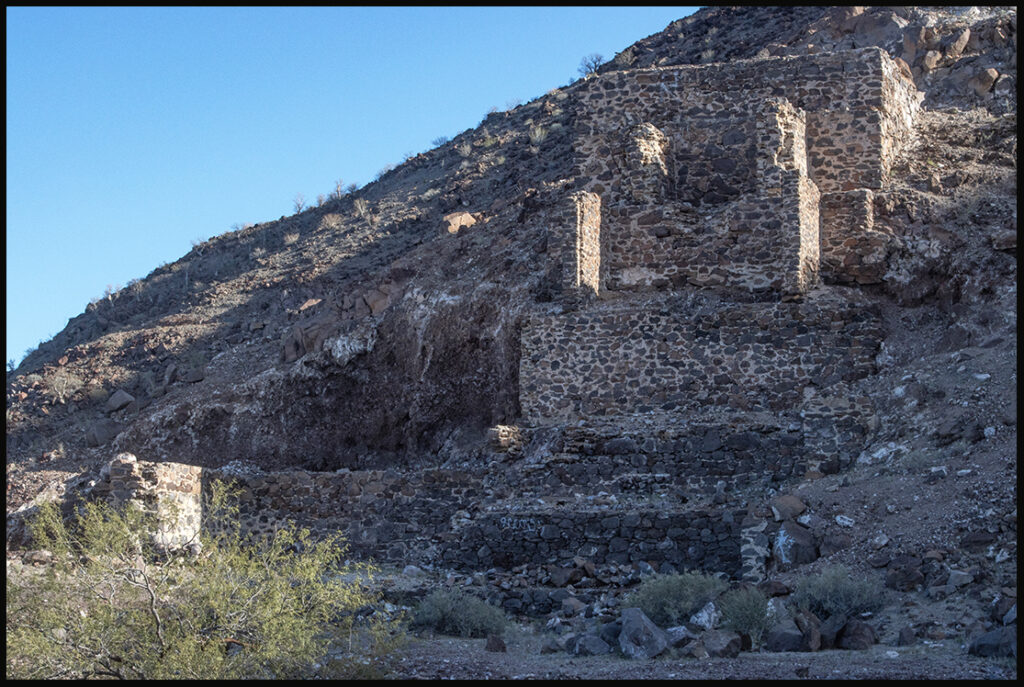
Old mill spilling down the hillside.
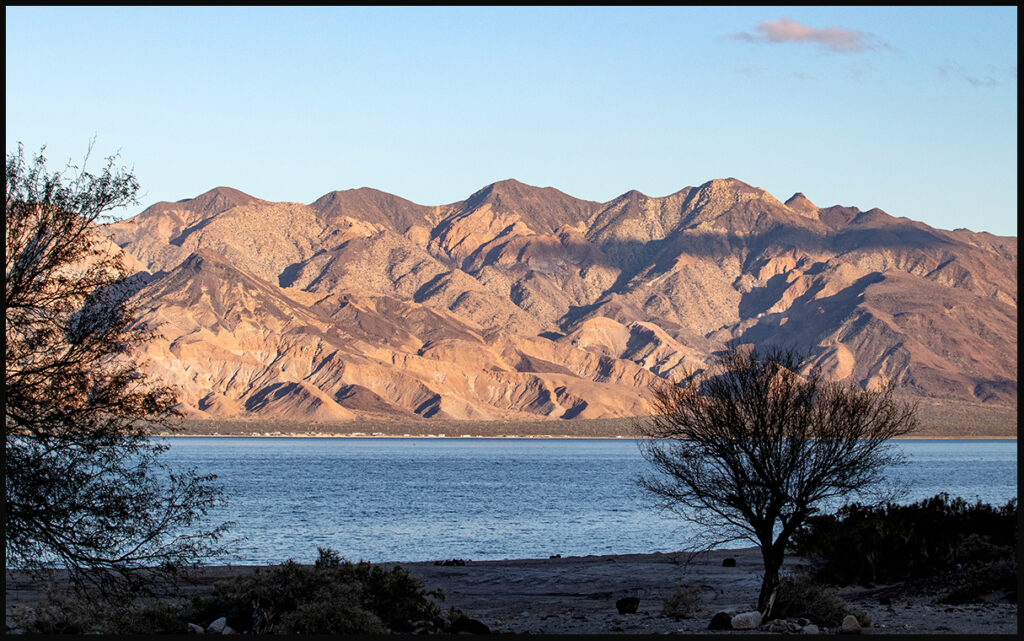
View across the bay from our site. There was a small town on the other side.
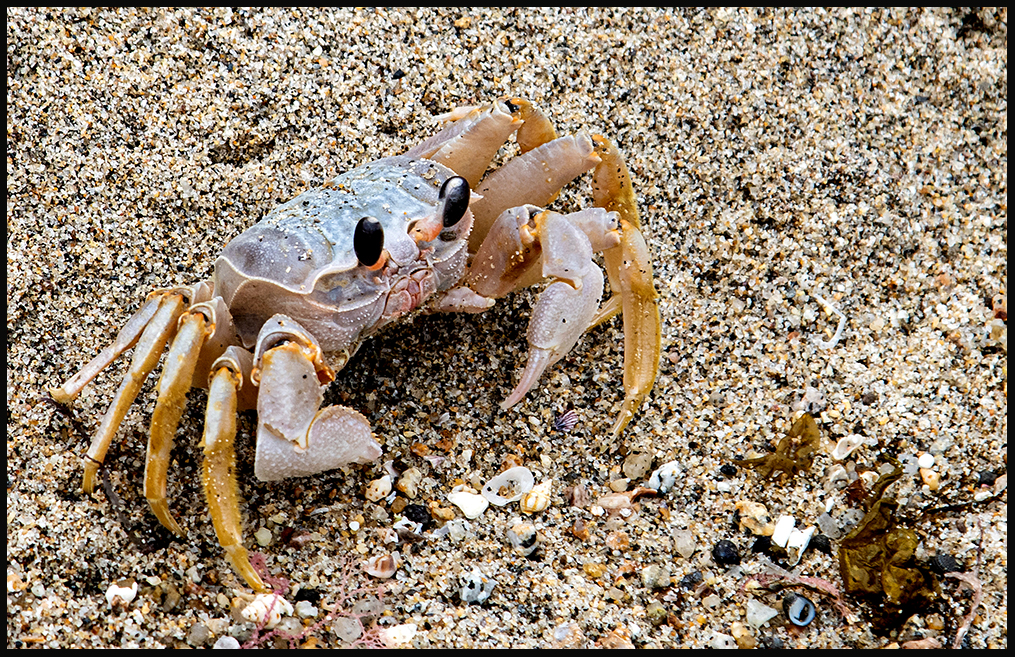
Favorite little beach buddy.
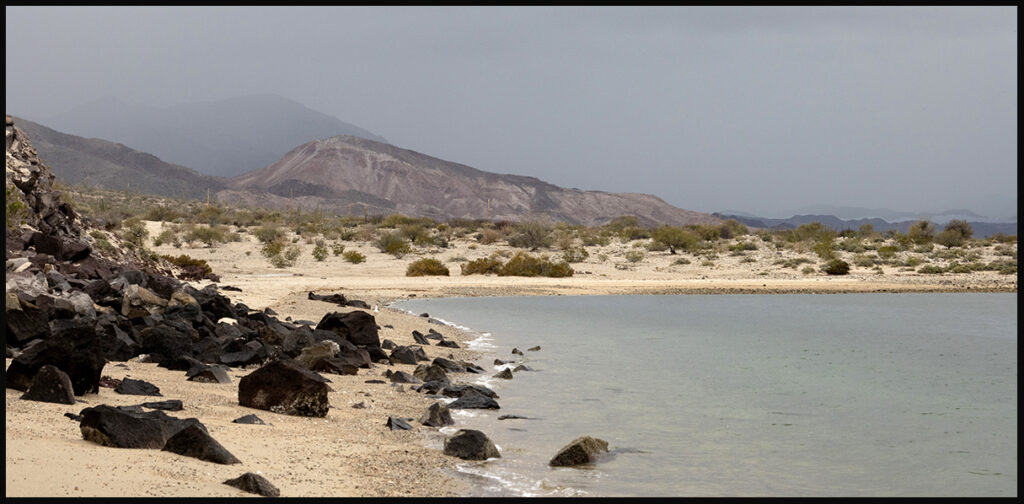
The next morning we just managed to get the camper folded up before it started to rain. Still such an unexpected sight in Baja.
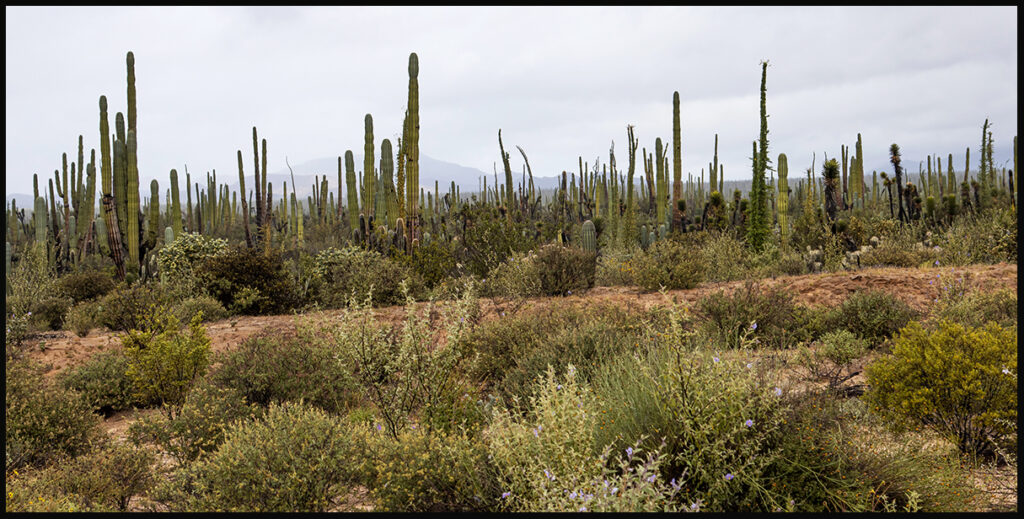
Boojum/Cardón forest stretching north.
Passed by a planned campsite in the boojum forest because the roads in were now a slimy, muddy mess. Pressed on to a favorite campsite overlooking a splendid canyon that had obviously gotten a lot of rain since our visit several years ago, but none recently. From this perspective we could see some rain to the south, but we were greeted with a double rainbow and very little moisture to justify one.
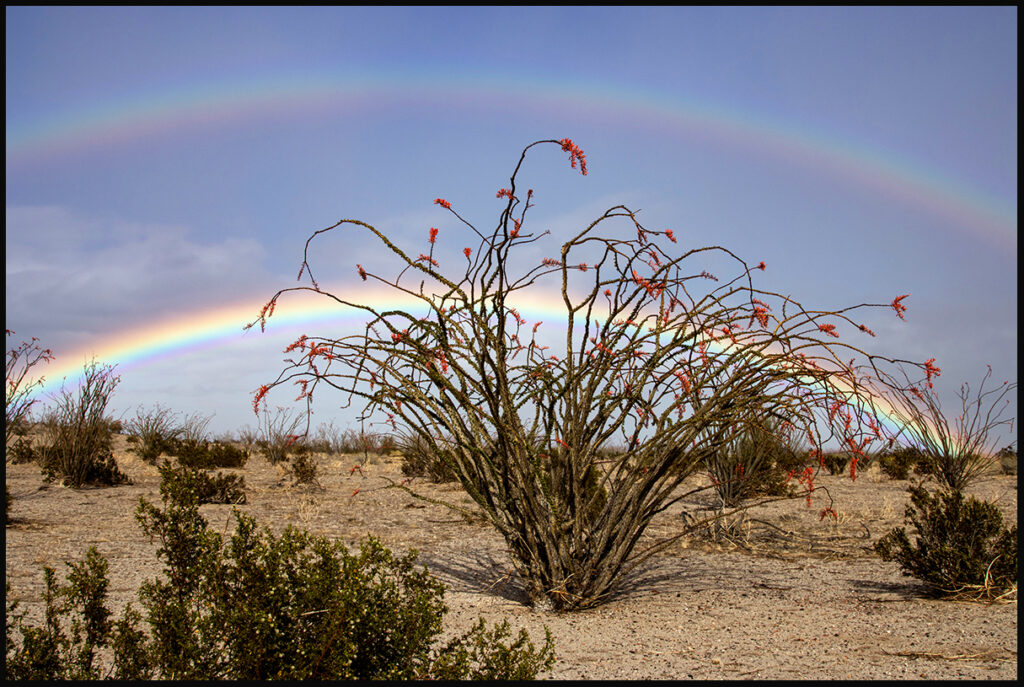
Rainbow with ocotillo.
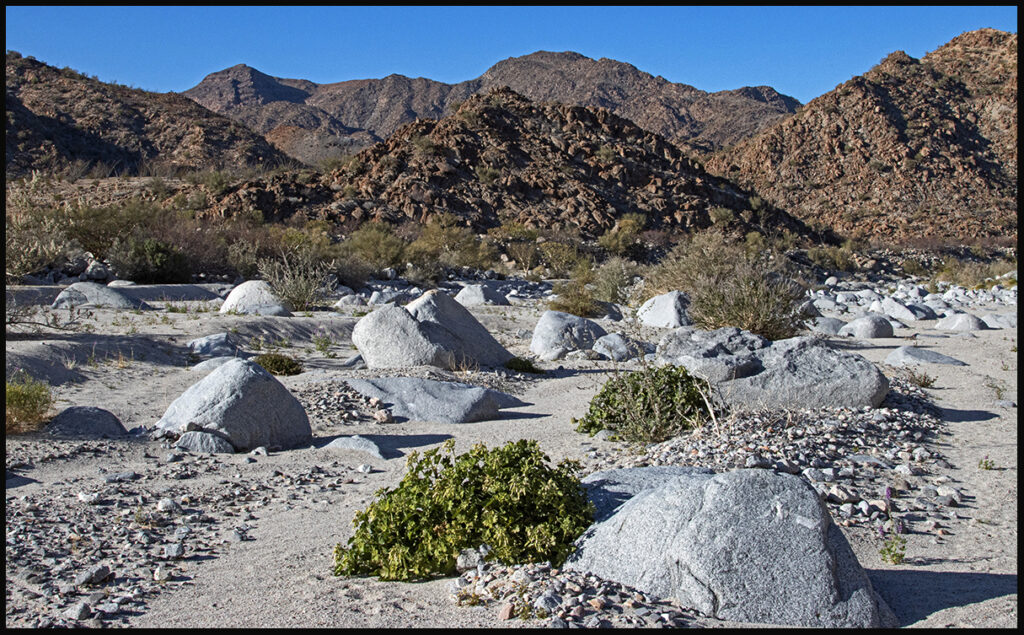
In the canyon bottom flood signs were visible, but no flooding now.
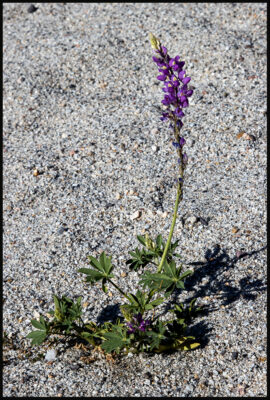
Desert lupine were hanging on in valley bottom.
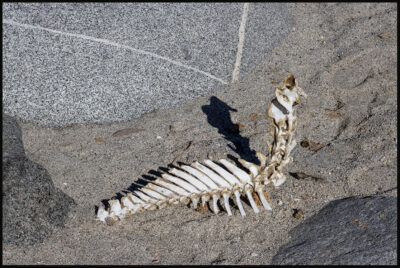
Weird little skeleton.

Canyon wall.
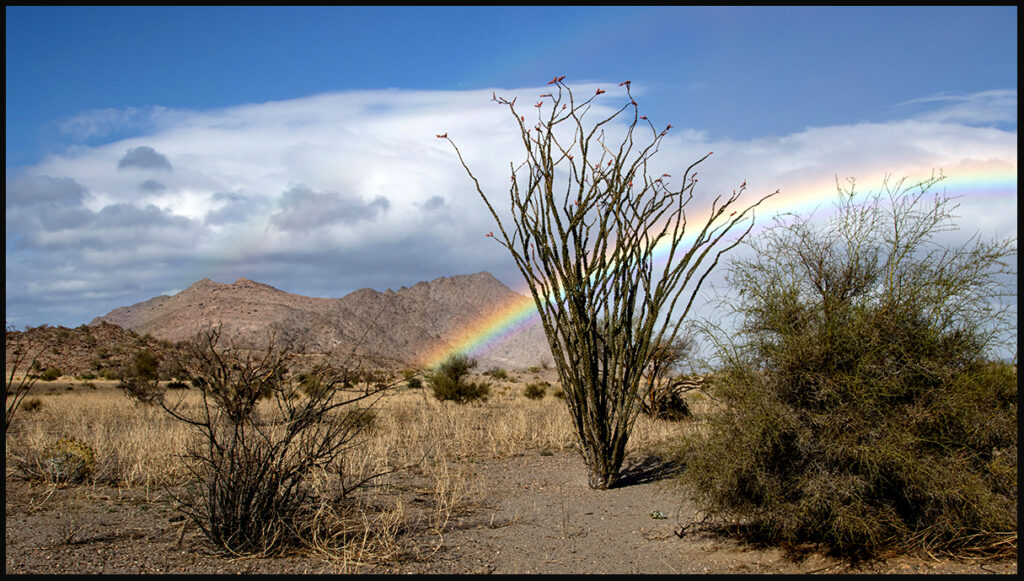
One more rainbow picture and then we’ll sign off from Baja with a curious burro pair. We crossed back to the states on March 20th. Mexico wasn’t paying any attention to the COVID-19 virus yet, so after an uneventful two hour wait to cross the border south of Yuma, AZ we weren’t prepared for the shutdown happening in the USA. Quite a surprise as we hadn’t been paying a lot of attention to the news. We did find some lovely camp sites on the way home even though most parks were closed. Next short blog will tell you about those.

Adiós amigos, hasta luego!

